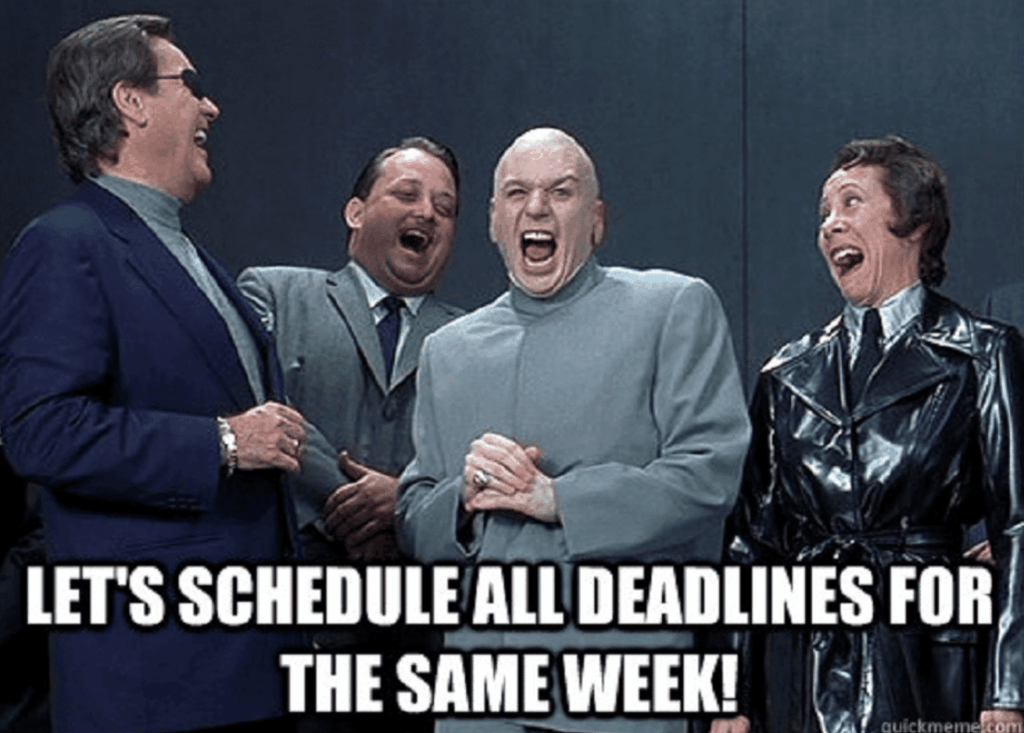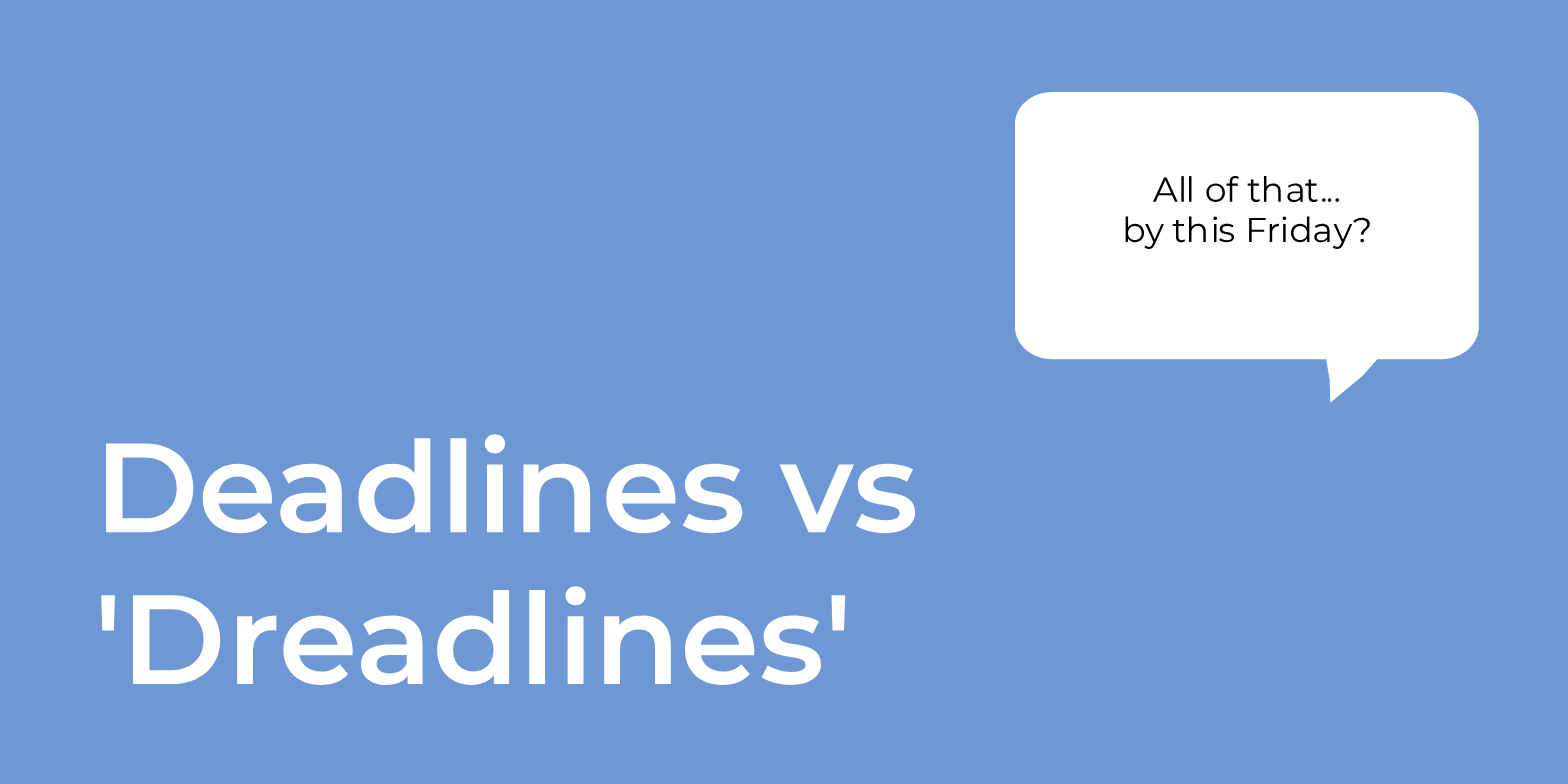A deadline comes from planning. A ‘dreadline’ comes from panic.
Jason Fried and David Hansson, co-founders of 37signals, coined the term in their book “It Doesn’t Have to Be Crazy at Work,” and it’s a useful lens for understanding why projects often feel chaotic even when teams are working hard.
What ‘Dreadlines’ Look Like
Dreadlines are arbitrary dates imposed from above without input from the people doing the work.
The “we need this by Friday” request that lands on Monday with no context. Quarterly targets moved up because leadership got excited at a conference. Campaigns that must go live because someone already promised a client.
Dreadlines trigger fight-or-flight responses. Teams push harder, stretch their hours, and deliver something that technically meets the due date but misses the mark on quality or sustainability.

What Real Deadlines Look Like
Real deadlines emerge from collaboration between the people setting priorities and the people doing the work. They account for complexity, dependencies, and the reality that good work takes time.
They come with clear scope where everyone knows what “done” means before anyone starts working. There’s agreement on what gets included, what gets cut, and what happens if new information changes things.
Most importantly, real deadlines include buffer time. Because at 37signals, they’ve learned what we see with our clients every day: everything takes longer than the initial estimate. Not because teams are inefficient, but because real work is complex.
The Cost of ‘Dreadlines’
When deadlines become dreadlines, teams pay the price in ways that don’t show up on the final project reports – high stress, reduced creativity and more breaking-points.
And the irony is that dreadlines don’t actually make things happen faster. They just make things feel more urgent while creating the conditions for mistakes, delays, and rework that slows everything down.
Research supports this with up to 70% of companies having had at least one project failure in the last 12 months and half say their projects consistently fall short of what they set out to achieve.
Building Better Deadlines
Organizations that build calm into their operating methods see greater productivity on the things that matter most.
It starts with honest conversations about capacity and complexity.
When we make this switch, projects get the time they need to be done right. And when priorities shift (like they always do) there’s flexibility built into the system.
The goal isn’t to eliminate urgency. The goal is to distinguish between what’s actually urgent and what just feels urgent.
Here are 5 ways to build better deadlines in practice:
- Ask what can be realistically accomplished
- Define what “done” looks like before work begins
- Build-in 1.5x buffer time. Everything takes longer than estimated
- Involve the people doing the work early-on in setting timelines
- Distinguish between real urgency and panic-driven requests
Replace dreadlines with calmer, more sustainable ways of working, and see how much smoother projects .

